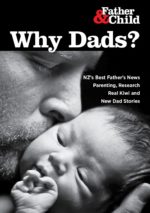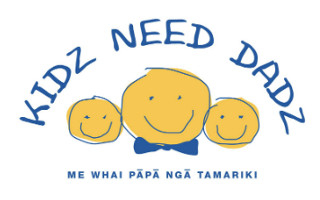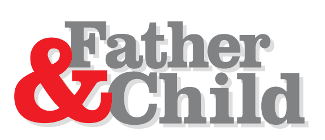Agency of Last Resort?
Few people are really happy with Child Youth and Family—but we keep putting it in the too hard basket, says Harald Breiding-Buss.
Child Youth and Family (CYF), the government agency charged with protecting children, is one of those organisations that will never be able to please everybody. In the messy business of taking children away from violent or incapable caregivers there are no winners.
The political parties know this and have mercifully refrained from using CYF as a convenient punching bag during election campaigns or to show up the government in parliament. No politician wants to be in the firing line himself on the issue of child abuse.
But this lack of political discourse about CYF has led to a lack of public attention on how CYF makes far-reaching decisions concerning vulnerable children.
In New Zealand, CYF’s philosophies and therefore the way they operate have been developed on the basis of local research analysis. Decision-makers are guided by this research, and have very much adopted a hands-off, don’t-rock-the-boat approach.
While on the face of it this sounds like best practice, the funding of both research and its analysis in New Zealand have been heavily influenced by women’s rights, an angle that is also very much evident in social work training.
And, unlike health research, social research is notoriously open to interpretations about what actually causes what, and whether there are any connections at all.
Critics of CYF say that it is a ‘feminist’ agency, while CYF emphasises – vehemently – that the child is at the centre of all their intervention.
Small bands of fathers have started to stage protests outside CYF offices in the main centres, but have been receiving much less attention from the media than similar protests outside Family Courts a few years ago.
The question is: is CYF biased against fathers?
As an agency accepting referrals from CYF and also helping some dads sort out problems with the agency, Father & Child support workers are often able to help achieve sensible outcomes. But with some issues we are hitting brick walls.
One such issue is the treatment of domestic violence. Where CYF receives a (mandatory) notification from police about a domestic violence callout or complaint, the blame is laid squarely at the father’s feet.
CYF’s reading of the research is that domestic violence is a form of emotional child abuse, and the agency deals with it by leaning heavily on the mother to take out a Protection Order against the father.
Reluctant mothers are often spurred into action by the open threat that, unless they take out this Protection Order, CYF will take the children away from her.
Fathers feel that CYF, on the other hand, takes no notice of violence directed against the children by their mother. Statistically, physical child abuse occurs most often in sole parent households, and women are slightly more likely to be perpetrators than men.
Father & Child experience is that removing the father often opens the door to this kind of child abuse, as the mother has lost her own punching bag to let out her own frustration. Domestic Violence usually involves mutual abuse that occasionally gets out of hand.
Removal of one of the parties prevents violence between the parents – but it does not prevent violence against the children. In fact, it makes it much easier to occur without detection.
This has not been a popular view in New Zealand government ministries and amongst our politicians. ‘Family’ violence campaigns are all about men hitting women, implying that these men then also hit the children. As Professor David Fergusson, head of the world-renowned 25-year Christchurch Longitudinal Health & Development Study, notes, this does not reflect reality.
Together with Associate Professor Richie Poulton, head of a similar longitudinal study in Dunedin, he publicly stated that their research showed most domestic violence to be mutual. In fact the Dunedin study, along with several overseas’ ones, has found women more likely to initiate domestic violence.
The same school of thought that blames men for all relationship violence also makes it so hard for separated fathers to get any attention with reporting abuse of their children at the hands of their mother.
Not only is this not believed, but it is seen as the father making a further attempt at abusing the mother, this time by trying to use the authorities. But fathers are the most likely people children will disclose abuse by their mothers to.
CYF is in an unenviable position here, and social workers often feel that both parties want to draw them onto their side in a custody battle. But fathers rights groups claim that while men are not believed when accusing women, CYF will act on mere hearsay when deciding to remove a father.
CYF requires no balance of proof. Being investigated for certain crimes is often enough to consider a man a risk and Protection Orders, which are not criminal convictions but a protection tool that requires no other evidence than a woman’s statement, are taken as proof of a violent offence or nature.
Men who have any suspicion of past sexual offences hanging over them are particularly vulnerable. In such cases CYF tend to commission risk assessments with an outside agency. A ‘high risk’ label will almost certainly ban the father from unsupervised contact until that child is an adult.
On the face of it this seems sensible.
However, when a Christchurch Father & Child support worker asked the assessing agency what conditions would need to be met to consider a father a ‘low risk’, he received the answer: ‘This is not what we do’.
Anyone with a conviction will always be assessed as high risk, regardless of the nature of the conviction, or the length of time that has passed. Men are not believed to be reformable.
Some of this can be put down to a ‘better safe than sorry’ attitude. For CYF, ‘sorry’ does not just mean harm coming to the child, but also to its own image.
In one Family Group Conference I attended, the CYF facilitator made her worry quite clear: if this child gets victimised by this father with a previous sexual conviction, she reasoned, CYF will get slaughtered in the media.
As far as the public is concerned, CYF only has to fear criticism for inaction. The many cases where CYFs had to reverse its decisions after court challenges, on the other hand, are never published. They fall under the secrecy of the Family Court statute.
This secrecy is, overall, a quite sensible measure to prevent harm coming to a child from publicity about the parents fighting over them. But it also prevents many of the dubious assumptions made in CYF decision-making from public scrutiny.
The decision-making of whether or not to remove a child from a family is not made easier by the fact that there is no real evidence that foster care is a better option. In fact, in the most general terms the risk of harm to a child increases sharply with either biological parent being removed.
Few children come out of foster care as well-adjusted adults, and a disproportionate number of them end up behind bars. It is impossible to determine whether this is a result of foster care, or the result of abuse of neglect that occurred before.
Many of our clients who have experienced foster care report having been beaten and maltreated.
Inmates at Christchurch Men’s Prison’s Youth Unit I talked to, who had been in foster care for much of their childhoods, remember being removed from their parents as extremely traumatic, and some believe this was more a factor in them going off the rails than the abuse they received from their parents. All of these young men had been beaten by their foster parents as well.
As though this is not complicated enough, research shows that once children are in foster care, contact with their biological parents can be counterproductive. On average, foster children who have such contact are unrulier than those who don’t.
All this only seems to prove one thing: removing a child from the care of one or both parents carries a great risk for this child. CYF is there to determine whether leaving a child with the parents is even riskier, and it is simply not possible to always get it right.
But in assessing the risk, the agency has to rely on research. If the research base is flawed, children will end up in worse situations than they came from.
Removing children is at the extreme end of CYF intervention, and a measure that CYF Social Workers generally try hard to avoid. Until it is considered inevitable, there is a range of mechanisms supposedly designed to keep a child safe.
The already mentioned Protection Orders are one way CYF is trying to achieve this. If the father is perceived to be a risk to the children, CYF will ‘recommend’ to the mother to take out such an order against him.
This ‘recommendation’ more often than not comes across as a threat, as the Social Worker makes it clear to the mother that if she will not protect her child in this way, CYF is left with no choice but to remove them from her care.
Once the Protection Order is in place, CYF generally relies on the Courts to enforce it, and the child is considered safe. At this point in time CYF will close the file, after making it clear that they will intervene should the Protection Order be lifted.
For a wrongly accused father this puts him in an impossible situation. He cannot go through the Court to have the Protection Order lifted, as they will not act against CYF recommendation without a full-fledged and very expensive hearing that will take 1-2 years to come about.
He also cannot go to CYF, who will tell him it is out of their hands now. A Catch 22.
Once risk is perceived to a child, CYF will generally convene a Family Group Conference—the same principle as is being used in Youth Justice. In theory these FGCs are a tool to come to an agreement with the family on how to keep the child safe.
The family itself, which includes extended family and sometimes even distant family members no-one has talked to in years, is asked to come up with a plan, which is then discussed with the Social Worker and agreement is reached.
It sounds like a good process, but in practice many families feel bullied during an FGC.
Before the family retreats to deliberate without CYF influence, they are being asked to answer the question ‘Is this child in need of care and protection?’. CYF will not accept a ‘no’ to this question, even from a united extended family, and no matter what evidence they can bring.
This will be considered a ‘non-agreement’ with CYF using the Court to arrange care for the child.
Workers from other agencies, including Father & Child, who have been to FGCs with families they have worked with, often come out disillusioned.
Once CYF have made up their mind the facilitator often seems to work towards bringing the family in line with CYFs views rather than getting a better picture of what is really going on in this family.
Sometimes this involves bullying the assigned Social Worker as well: while an FGC facilitator has no negotiating rights (this is solely the domain of the Social Worker with input from their supervisor) they will nevertheless lay down the law on what is and isn’t acceptable to CYF.
Informally, current and former Social Workers have complained to Father & Child staff about this kind of behaviour. It seems that more sensible solutions are being prevented by the CYF hierarchy, which works on a probably biased reading of social research.
How to protect children from harm from within their own family is one of the most difficult areas a country is faced with.
But while every high-profile case of child abuse triggers calls for more powers for CYF, these already quite extensive powers can also create some rather substantial damage where CYF got it wrong.
If CYF is biased against men this will to a large degree be the result of a systemic bug: Mothers are being seen by Plunket nurses, midwives, parent educators or social workers from other agencies, and these can supply first-hand information.
Any information about fathers is usually second-hand and more often than not originates from the mother, or comes from intervention during conflict. Plus, a father’s caregiving role within the family is generally underestimated as he is assigned a secondary ’support’ role in people’s minds. Therefore the impact of his removal is underestimated.
On the other hand, Father & Child gets a significant number of referrals from CYF Social Workers for fathers, who have resumed full care of their children after CYF intervention.
Where there are problems with the mother, a father is definitely near the top of the priority list for a child’s alternative placement.
Next: The Big O.E.




